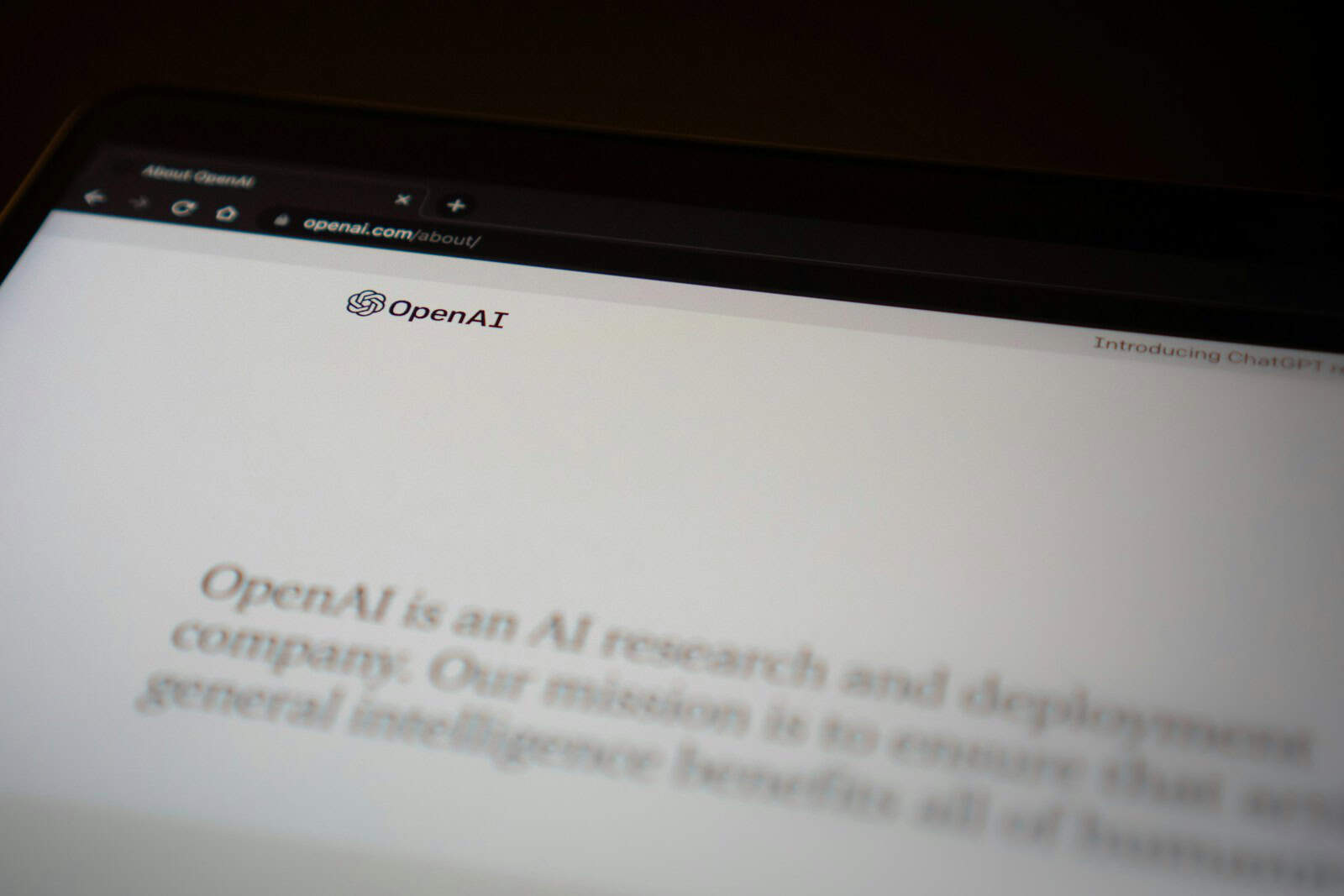AI has the potential to revolutionize education by empowering teachers and personalizing learning experiences. However, it’s important to use these tools thoughtfully and address potential challenges. Teachers have a unique role in shaping minds and inspiring future generations. AI tools can lighten their load and make teaching more enjoyable. Let’s explore some amazing AI tools that can assist teachers.

AI Tools That Every Teacher Should Be Using (Ranked)
| Rank | AI Tool | Primary Function | Benefits for Teachers |
|---|---|---|---|
| 1 | ChatGPT | Conversational AI | Create lesson plans, generate questions, provide student feedback, and automate repetitive tasks. |
| 2 | Grammarly | Grammar and Writing Assistant | Enhance writing quality, identify grammatical errors, and improve clarity in student assignments. |
| 3 | Canva Magic Write | Text-to-Image Generator | Create visually appealing presentations, design engaging educational materials, and inspire creativity in the classroom. |
| 4 | Quizlet | Flashcard and Study Set Platform | Facilitate student learning and retention with interactive flashcards, games, and practice quizzes. |
| 5 | Pear Deck | Interactive Presentation Tool | Increase student engagement with real-time collaboration, polls, and interactive activities during presentations. |
| 6 | ClassDojo | Classroom Management and Communication Platform | Streamline communication with parents, share student progress, and create a positive classroom culture. |
| 7 | Edpuzzle | Interactive Video Lesson Tool | Embed questions and notes within videos to enhance comprehension and check for understanding. |
| 8 | Google Classroom | Learning Management System | Organize assignments, distribute resources, and provide feedback to students in a centralized platform. |
| 9 | Seesaw | Digital Portfolio and Learning Journal | Empower students to document and share their learning journey with interactive activities and multimedia tools. |
| 10 | Socrative | Assessment and Feedback Tool | Create quick quizzes, polls, and exit tickets to gather real-time data on student understanding. |
Using AI to Enhance Teaching

Lesson Planning and Delivery
Forget about late-night lesson prep! AI-powered platforms like Education Copilot help teachers create engaging lesson plans in a fraction of the time. These tools suggest activities, resources, and assessments aligned with learning objectives, making lesson planning a breeze.
Personalized Learning Experiences
Every student learns differently. AI can analyze student data to personalize learning experiences. Tools like Carnegie Learning’s MATHia adapt to each student’s pace and learning style, providing tailored support and feedback.
Automated Grading and Feedback
Grading stacks of papers can be a real drag. AI-powered grading tools like Gradescope automate grading for multiple-choice and short-answer questions. This frees up teachers to focus on providing personalized feedback and guiding student learning.
Data-Driven Insights
Data is a treasure trove of information. AI can analyze student data to identify areas where students excel and where they might need extra support. This allows teachers to tailor their instruction and intervene early when students struggle.
Enhancing Accessibility
AI can make learning more accessible for all students. Microsoft’s Immersive Reader helps students with reading difficulties by adjusting text size, spacing, and background color. It can even read text aloud, making content more accessible for students with visual impairments.
Creative Collaboration and Communication
AI-powered tools like Canva and Grammarly empower teachers to create visually appealing presentations and error-free documents. They can even help teachers brainstorm ideas and collaborate with colleagues more effectively.
Addressing Challenges
While AI offers exciting possibilities, it’s important to be mindful of potential challenges. Privacy concerns, biases in AI algorithms, and the need for teacher training are all important considerations.
The Future of AI in Education
The potential of AI in education is vast. As AI technology continues to evolve, we can expect even more innovative tools that will transform the way teachers teach and students learn. Let’s embrace these tools and use them to create a more personalized, engaging, and effective learning environment for all.
| AI Tool | Description | Benefits |
|---|---|---|
| Education Copilot | AI-powered lesson planning platform | Saves time, suggests activities and assessments |
| Carnegie Learning’s MATHia | Personalized math learning platform | Adapts to individual student needs, provides tailored support |
| Gradescope | AI-powered grading tool | Automates grading, frees up teacher time |
| Microsoft’s Immersive Reader | Accessibility tool | Enhances readability for students with reading difficulties |
| Canva | Graphic design platform | Creates visually appealing presentations |
| Grammarly | Writing assistant | Improves grammar and spelling |
Understanding AI in Education
Artificial Intelligence (AI) has truly transformed the landscape of education, providing innovative tools for educators and enhancing learning experiences for students.
Evolution of AI Tools
In 2023, we witnessed a remarkable shift with AI becoming more prevalent in classrooms. Initially, educators utilized AI to perform simple tasks like grading quizzes, but today’s AI tools are much more sophisticated. AI can design detailed lesson plans, create interactive learning materials, and even tailor content to meet individual student needs. This progression signifies a leap from basic automation to a more personalized, adaptive learning environment.
Benefits for Teachers and Students
Teachers: They’re gaining back precious time, had previously spent on repetitive tasks, thanks to AI assistance. Now, they can focus on fostering deeper connections with their students. AI tools help them develop a diverse array of educational resources, including multimedia presentations and engaging activities that cater to different learning styles.
- Resource Curation: AI systems can sort through educational material, providing teachers with relevant content for lesson planning.
- Interactive Tools: Educators can use AI to craft activities that actively involve students, making lessons more dynamic.
- Personalized Learning: AI can analyze a student’s performance and suggest customized learning paths.
Students: They benefit from a learning experience that adapts to their pace and style. AI-driven programs offer immediate feedback, a critical factor for learning, and help identify areas requiring additional attention.
- Feedback and Assessment: Immediate, AI-generated feedback can aid students in understanding concepts more quickly.
- Supportive Learning: AI tools can offer additional support outside of classroom hours, ensuring no student falls behind.
By harnessing AI’s potential, both teachers and students are navigating a much more efficient and responsive educational journey.
AI Technologies in the Classroom
Embracing AI technologies in the classroom has transformed traditional teaching and learning experiences. These tools support interactive learning environments and provide a range of functionalities to improve the educational process.
Interactive Whiteboards
Interactive whiteboards have become central to modern learning environments, leveraging touch detection for user input such as scrolling, right clicking, and more. Google Classroom and similar platforms can be integrated with these boards, allowing teachers to present lessons that are more dynamic and engaging compared to traditional whiteboards or projector screens.
Smart Classroom Systems
Smart classroom systems utilize integrated technology to create an interconnected classroom. These systems can include sensors, interactive displays, and chatbots that can be customized to fit the curricular needs. Such systems streamline the delivery of lessons, attendance tracking, and real-time student feedback, making the classroom a highly efficient learning space.
Virtual Teaching Assistants
Virtual teaching assistants, sometimes powered by chatbot technology, can handle routine tasks and provide students with immediate responses to frequently asked questions. They free up valuable time for teachers, who can then focus on more complex teaching tasks and individual student needs. These AI-driven assistants are continually becoming more advanced, further enhancing their utility as a teaching assistant.
AI-Powered Curriculum Development
The integration of AI into curriculum development heralds a new era for educational planning, allowing for more personalized, dynamic, and engaging teaching strategies.
Automated Lesson Planning
With AI tools, educators can streamline the lesson planning process. AI can suggest templates and frameworks based on the syllabus, ensuring that lessons are structured in a coherent fashion. These tools support teachers by generating comprehensive lesson plans that align with educational standards and learning outcomes.
Adaptive Learning Platforms
Adaptive Learning Platforms are at the forefront of educational technology, offering tailored learning experiences that adjust to each student’s performance. By analyzing individual progress, these platforms can modify the difficulty level of tasks or suggest additional resources to help students master the concepts at their own pace.
Curriculum Personalization
The personalization of curriculum is another breakthrough made possible by AI. It enables educators to craft unique learning pathways for students. CurriPod, for example, could use AI to align curriculum materials with individual learning preferences and prior knowledge, thus enhancing the educational experience for each student.
Assessment and Feedback Tools
Teachers now have the ability to streamline the often time-consuming tasks of grading and providing feedback through innovative AI tools. These technologies not only save precious time but also enhance the overall teaching and learning experience.
Grading Automation
Gradescope stands out as a game-changing platform, revolutionizing the grading process. By allowing teachers to grade multiple papers swiftly, it ensures consistent application of the rubric. Teachers can mark common mistakes across several papers at once, guaranteeing fairness and efficiency in the grading process.
Real-Time Feedback Systems
Real-time feedback systems are transforming the classroom environment by providing instant responses to student inquiries and submissions. These systems analyze student input and offer immediate, personalized feedback that helps enhance learning and understanding on the fly.
Plagiarism Detection Software
With the integration of plagiarism checker tools, teachers can easily validate the originality of student work. These software applications scan documents against extensive databases to detect similarities and potential cases of copying, allowing for the enforcement of academic integrity with confidence and ease.
Enhancing Student Engagement
Teachers are tapping into the power of AI to create dynamic educational experiences that grab students’ attention and drive their commitment to learning.
AI-Enhanced Quizzes and Games
It’s no secret that students love games, and educators are leveraging AI to transform quizzes into engaging activities. Platforms like Quizizz incorporate AI to offer interactive quizzes that act like games, keeping the competition fierce and the learning deep. These quizzes adapt in real-time, offering students increasingly challenging questions as they prove their mastery.
Tailored Learning Experiences
Students learn best when lessons meet their unique needs. AI aids in delivering personalized learning experiences by analyzing performance data and identifying learning patterns. AI systems tweak lesson plans and materials on the fly to suit individual learning speeds and styles. This bespoke approach ensures that every student faces the right level of challenge.
Language Learning Aids
Language learners have particular needs, and AI comes to the rescue with tools that provide real-time feedback and tailor exercises to individual abilities. These aids include pronunciation guides, vocabulary games, and grammar exercises that adapt to a student’s progress, delivering a custom-fit path to language proficiency.
In employing AI tools for quizzes, tailored learning, and language aids, educators unlock new ways to hold students’ interest and foster a love for learning that lasts.
Support for Administrative Tasks
Teachers are increasingly turning to AI-powered tools to streamline the array of administrative tasks, such as grading and planning, freeing up time for student engagement and instruction.
Efficiency in Classroom Management
Classroom management becomes more manageable when AI steps in to assist. Tools like EduAide.ai automate attendance monitoring and manage the submission of assignments. This allows teachers to allocate more time to educational activities rather than on routine, time-consuming organizational work.
Time Management Tools
AI provides a selection of time management tools that are crucial for efficient education delivery. For example, Magic Write can instantly create educational content, helping educators prepare teaching materials quicker. AI can also suggest improvements to how teachers manage their schedules.
Communication and Planning Aids
By using AI tools, teachers can improve the way they communicate with both students and parents. AI aids in creating clear, concise newsletters and email updates. It also helps in setting up calendars for events, ensuring that everyone stays informed and can plan accordingly.
Improving Content Delivery
Teachers have a range of AI tools at their fingertips, designed to make educational content more engaging and accessible for their students.
Dynamic Presentation Tools
AI-powered presentation tools are transforming how educators create and deliver content. Tools like Canva.com and SlidesAI.io enable teachers to design visually compelling slides. Canva simplifies graphic design with a drag-and-drop interface and a vast library of templates, making it easy for anyone to create professional-looking presentations. SlidesAI.io takes it a step further by generating slide content automatically from a provided outline, ensuring presentations are not only appealing but also informative and tailored to the lesson at hand.
- Canva.com
- Drag-and-drop interface
- Extensive template library
- SlidesAI.io
- Automatic content generation
- Customized lesson-tailored slides
AI for Interactive Lessons
Interactive methods take advantage of generative AI to turn typical lessons into lively, dynamic activities. Firefly, an educational platform, assists teachers in constructing interactive activities that can adapt in real-time to student responses. This level of interaction ensures that each lesson addresses student needs, keeps them engaged, and fosters a deeper understanding of the material.
- Firefly:
- Adapts to student input
- Creates engaging activities
Data-Driven Teaching Strategies
The push towards data-driven strategies in education has opened new avenues for tailoring student learning experiences. Through detailed analytics, educators are now empowered to enhance student outcomes and foster critical thinking skills.
Student Performance Analytics
Educators leverage student performance analytics to monitor progress and identify areas where support is needed. Here’s how it looks in practice:
- Daily Assessments: Quick quizzes can gauge student understanding, with results feeding into an analytics dashboard.
- Long-term Tracking: Patterns in student performance over time highlight strengths and weaknesses, enabling targeted interventions.
AI for Classroom Insights
AI applications provide deeper insights beyond basic grades and scores:
- Participation Trends: A tally of raised hands, group contributions, and more can pinpoint those shy to participate.
- Sentiment Analysis: Evaluating the tone in student essays may offer clues about a student’s engagement and comprehension.
Using these tools, teachers can create a responsive classroom environment that adjusts to the learning needs of every student.
Professional Development and Support
Professional development in education is evolving, with AI playing a key role in training teachers and fostering collaboration among peers. These advancements are equipping educators with cutting-edge teaching techniques and support systems.
AI Tools for Teacher Training
AI tools are revolutionizing how educators fine-tune their skills. They offer interactive scenarios and simulations where teachers can practice new strategies before trying them out in the classroom. For example, feedback bots provide real-time suggestions and guidance, helping teachers to adjust their methods and improve student engagement. This hands-on approach ensures that professional development is tailored to the needs of each teacher.
Example of AI Tools for Training:
- Simulations: Virtual environments where teachers can practice classroom management and instructional strategies.
- Feedback Bots: AI systems that analyze teaching methods and give instant constructive feedback.
Peer Collaboration Platforms
Collaboration platforms powered by AI are also forging stronger connections among educators. These platforms allow teachers to share resources, discuss successful teaching practices, and offer support. They create spaces where educators can learn from each other’s experiences, which benefits not just individual teachers, but also the quality of education as a whole.
Features of Peer Collaboration Platforms:
- Resource Sharing: Teachers can upload and download lesson plans, activities, and assessments.
- Discussion Forums: A place for educators to exchange ideas and seek advice on various teaching challenges.
Safety, Ethics, and Privacy
Teachers today are increasingly using AI to enhance learning, but they must do so with a sharp focus on safety, ethics, and privacy. These three areas are critical to ensure a responsible application of technology in education.
AI and Data Protection
Data protection is a major aspect of incorporating AI into teaching. Teachers must:
- Understand and comply with data privacy laws.
- Be careful not to reveal sensitive student information.
- Use AI tools that prioritize the security of student data.
Ethical Teaching Practices
When it comes to ethical teaching practices, educators should:
- Make informed decisions about when and how to use AI.
- Ensure AI tools support fairness, equity, and inclusivity.
- Foster an environment where ethical use is discussed and encouraged.
Frequently Asked Questions
This section addresses common questions about AI in education and provides direct answers relevant for teachers and students.
How can artificial intelligence enhance the teaching and learning experience?
AI can personalize learning by adapting materials to meet each student’s needs and can also automate administrative tasks, giving teachers more time to focus on classroom instruction.
What are the top AI resources available for educators to use in the classroom?
Educators have access to various AI tools like adaptive learning platforms, AI-powered grading assistance, and educational chatbots which support interactive learning environments.
Are there any cost-effective AI platforms specifically helpful for ESL teachers?
Yes, ESL teachers can utilize AI platforms that offer language learning apps with speech recognition and interactive chatbots to aid language practice at a low cost.
Which AI applications are best suited for creating interactive lesson plans?
AI applications that allow teachers to embed quizzes, branching scenarios, and simulations are particularly effective for crafting interactive lesson plans.
Can AI tools be integrated into curriculums seamlessly, and how do teachers approach this?
Teachers can integrate AI tools into curriculums by aligning them with learning objectives and using them to support instruction and assessment in a natural progression.
In what ways can generative AI be leveraged for educational purposes?
Generative AI can be used to create customized learning materials, provide writing assistance, and generate practice exercises that adapt to individual students’ learning progress.







